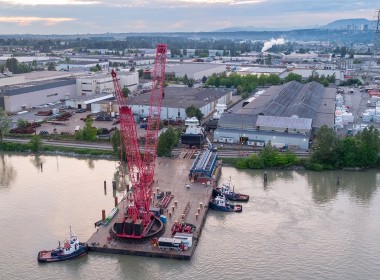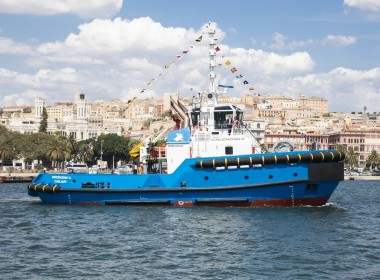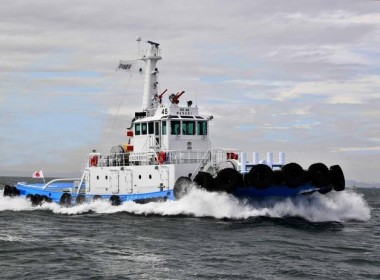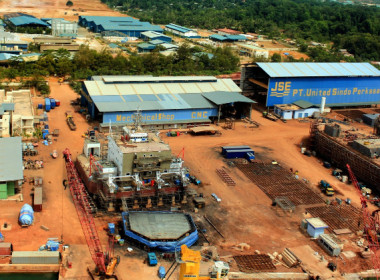COLUMN | Do androids dream of electric tugs? [Tug Times]

With apologies to Philip K. Dick, whose dystopian novel spawned the excellent film Blade Runner, I suppose there must be an android somewhere that thinks electric tugs are a good idea, and there are certainly plenty of humans who agree. I am probably one of them, but I still have questions about battery life and the amount of time such tugs will be able to operate between charges.
In recent weeks, reports have emerged that appear to go some way to answering my questions. Damen kicked things off when it announced it had installed the batteries on Sparky, the new all-electric tug being built for the Ports of Auckland. Even an android could have come up with a better name (which I hope is quite inappropriate because sparks can be dangerous) but the idea is excellent. I was shocked to discover the tug needed 2,240 batteries to generate its 70 tonnes bollard pull, but I will take their word for it.
The main thing in the report was the fact that the tug will be able to perform “two or more” berthing/unberthing jobs on a single charge, and can then be recharged in two hours. Sparky is due for delivery by the end of this year (assuming New Zealand is letting people in by then) and Ports of Auckland intends to be a zero emissions organisation by 2040. Good for them.
That press release was issued before the latest lockdown in New Zealand, which led me to wonder whether they should not have considered a fully autonomous tug that could have entered the country without any troublesome crew on board.
“There are no doubt less reputable operators who will be focusing on the cost-saving implications of the technology.”
Next came news that Crowley is building eWolf (a much better name, so perhaps there are already androids in America, although I am going to resist the temptation to make a joke about former presidents with orange skin). This will be the first fully-electric harbour tug in the USA and will enter service in San Diego, so let’s hope it has a good firefighting system.
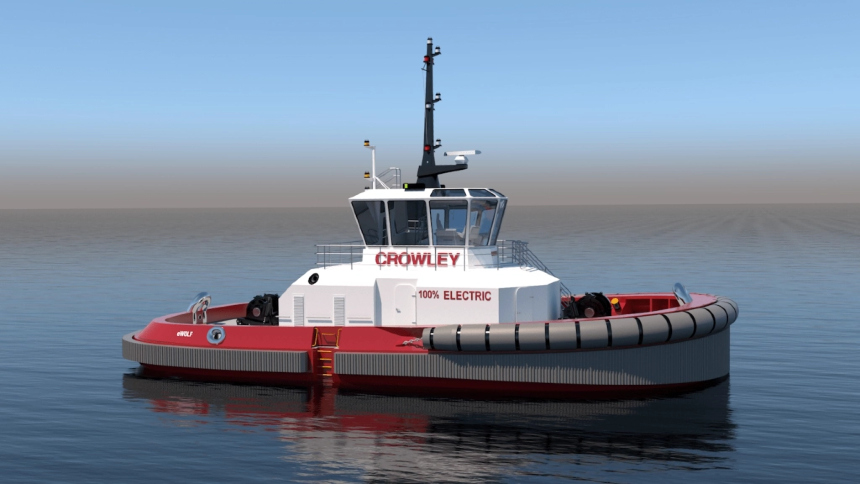
Due for delivery in 2023, the tug has an integrated propulsion and control array from ABB, and will also generate 70 tonnes bollard pull. “The battery allows the tug to complete a full day of typical work before there is a need to charge,” according to a company spokesperson.
As far as I can tell, nobody explained what a full day of typical work in San Diego consists of, but looking at the number of tugs and ship moves in the port, it might be up to two jobs, so appears quite similar to Auckland. This limited endurance would be a problem in busier ports, but is probably good enough for most places where harbour tugs operate.
Naturally, the Crowley tug will be equipped with all the remote monitoring technology needed to enhance safety and predict when things are likely to go wrong, although I worry that is just another way of saying they will be able to get rid of the crew whenever it suits them.
I might be doing Crowley a disservice, but there are no doubt less reputable operators who will be focusing on the cost-saving implications of the technology. And it is the American Bureau of Shipping that recently issued guidance on the “technology, systems and regulations needed for minimising human presence on offshore facilities.” Indeed, the ABS makes no secret of the fact that, “by utilising new technologies, the number of personnel …. can be reduced, minimising personnel exposure and potentially reducing overall capital and operating costs.” I suspect many owners will read that with glee, and totally ignore the ABS’ use of the word “potentially.”
“The new electric tug built for Lianyungang Port possibly demonstrates that the Chinese are taking emissions regulations seriously.”
Amidst all this encouraging news I was delighted when, seemingly out of the blue, China announced the development of a fully electric harbour tug, which commenced trial operations on 16th August this year. Once again, China has quietly beaten the world and pioneered an electric tug just as it earlier pioneered gunpowder, golf, paper, alcohol, tea and silk.
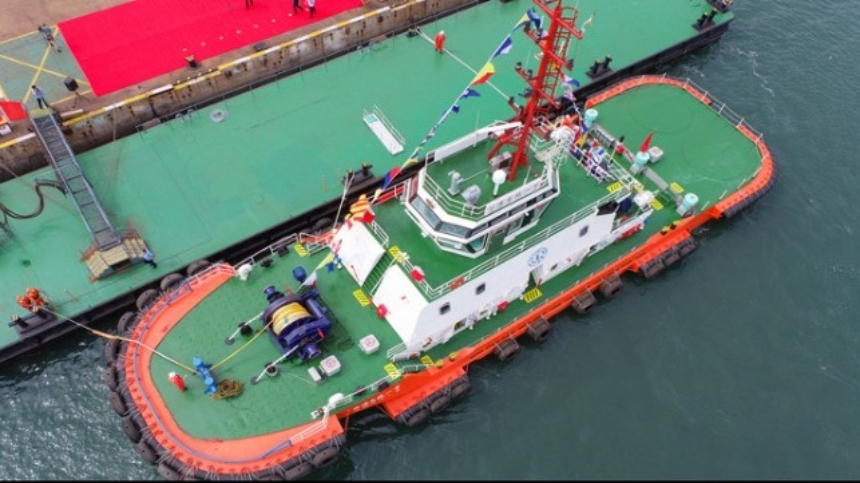
The Chinese tug is said to have 48 tonnes bollard pull and an operating time of at least eight hours between charges. Assuming some of this operating time is used for wafting the tug from one job to another, it still appears to have at least as much towing endurance as the others. The bollard pull is lower, but 48 tonnes is still more than enough for most ports.
If the borders were open, I would be on my way to Lianyungang port in Jiangsu province as quickly as possible to have a look, but that will have to wait. In the meantime, I was encouraged to see the designers have not added any bells or whistles. Outwardly, the tug looks like any other Chinese or Japanese harbour tug built since the 1970s, although it lacks funnels or exhausts, and the designers admit it can probably be operated by only three crew members – standard manning for many of us. There was nothing in the press releases about remote monitoring or control, just a simple statement that the tug will eliminate 300 tonnes of fuel consumption each year, and avoid emissions of about 900 tonnes of carbon oxides annually.
China has fairly stringent emission regulations for domestic vessels, and its entire coastline is now an emission control area, so this new tug possibly demonstrates that they are taking the regulations seriously. Good for them. My only concern is the name of the tug – Yungang Electric Tug No. 1 – which does not exactly trip off the tongue. Take my advice, people – if you quickly rename it eDragon, the buyers will be queueing up to get their hands on one.


